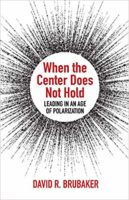
The “Great Resignation” dominated articles regarding workplace trends for much of the pandemic. Frontline workers in high-stress occupations like hospitality, health care, and education were particularly likely to walk off their jobs. Clergy joined the trend, with nearly 40% of pastors confessing in late 2021 that they would seriously consider leaving full-time ministry.
But while The Great Resignation attracted much attention, a less obvious trend, “Quiet Quitting,” may prove to be more durable. Quiet Quitting, sometimes known as the “Great Disengagement,” occurs when employees resolve to do what they are required to do—but decline to “go above and beyond.” A worker who is Quiet Quitting may appear to be productive, but their productivity is apt to stagnate over time. In schools and universities, teachers and professors bemoan the phenomenon of disengaged students. Quiet Quitting has its religious counterpart as well, as the proportion of Americans who report they “never attend religious services“ jumped from 25% pre-pandemic to 33% more recently.
Quiet Quitting in the Pandemic
Many teachers and professors report a dramatic increase in disengagement among their students since the onset of the pandemic, as school shutdowns spiked truancy and absenteeism rates. While elementary and secondary attendance levels have rebounded post-pandemic, they have not returned to pre-pandemic levels. And when students are in class, instructors report greater difficulty getting students to engage. The pandemic may not have caused Quiet Quitting, but it clearly accelerated it.
While average attendance has rebounded in many congregations (at least when we include livestream attendance), deeper participation is still lagging. As with Quiet Quitters in the workplace, schools, and universities, congregants may show up on a Saturday or Sunday…but are less apt to jump in and help.
The shift towards lower civic engagement is not just a pandemic phenomenon—it has been underway for decades. As Robert Putnam wrote in Bowling Alone (published in 2000), “What really matters from the point of view of social capital and civic engagement is not merely nominal membership, but active and involved membership.” Quiet Quitting undermines precisely that sort of membership.
The Great Disengagement poses special challenges to congregations because they depend so much on volunteers. Exploring the Pandemic Impact on Congregations (EPIC), a five-year longitudinal study by the Hartford Institute for Religion Research, found that “while 90% of congregations surveyed had returned to face-to-face worship by the spring of 2021, 57% of churches reported not being able to host religious educational programming at pre-pandemic levels.”
Fortunately, as Susan Beaumont has pointed out, congregations can re-engage volunteers by streamlining roles, embracing technology, promoting flexibility, shifting to “episodic micro-volunteering,” clarifying expected outcomes, and helping people to pursue their passions. Yet the question remains: Why are workers, students, and congregants less engaged now than in previous decades and generations?
Reasons for Quiet Quitting
I propose three primary reasons for the growing disengagement, each of which reflects a failure to meet a basic human need. A productive response requires that we understand these basic needs and craft responses that address them.
Meaning: Every human requires a sense of meaning. If I can’t see meaning or purpose in the work I do, the courses I take, or the worship I participate in, I may continue to show up–but over time I’m apt to fade out. Leaders should plan meaning-making opportunities—times to clarify why we do what we are doing. If we want engagement, we must provide meaning.
Connection: Each person also needs to feel an active, meaningful connection with other people. Various studies have found that congregational members connected to small groups are more likely to be vitally engaged in other aspects of congregational and community life. It’s one thing to sit in a pew along with hundreds of others—and something very different to sit in a circle with a small group. Effective teachers structure classrooms with tables for small group work, not only rows for listening. If we want engagement, we must structure for connection.
Participation: All of us want to know that our participation matters—that we are contributing, not just receiving. Free online lectures—“Massive, Open, Online Courses“ (MOOCs)—flamed briefly and then fizzled. No surprise! While listening to a gifted lecturer for 15 minutes can be entertaining, at some point we want to engage—to question, challenge, and suggest. One-way communication leads to disengagement. If we want engagement, we must invite people to participate.
Quiet Quitting has employers, teachers, and clergy wringing their hands. But the solution is not only to offer better wages, more entertaining lectures, or more dynamic worship. Also needed are opportunities for meaning-making, genuine connection with others, and authentic participation. The better your congregation can meet these three basic human needs, the more likely you will be to re-engage your Quiet Quitters.
David Brubaker has consulted with organizations and congregations in the U.S. and a dozen other countries on organizational development and conflict transformation. He is the author of Promise and Peril, on managing change and conflict in congregations, and When the Center Does Not Hold, on leading in an age of polarization. David recently retired from his role as Dean of the School of Social Sciences and Professions at Eastern Mennonite University, and is now a Professor Emeritus of Organizational Studies.


